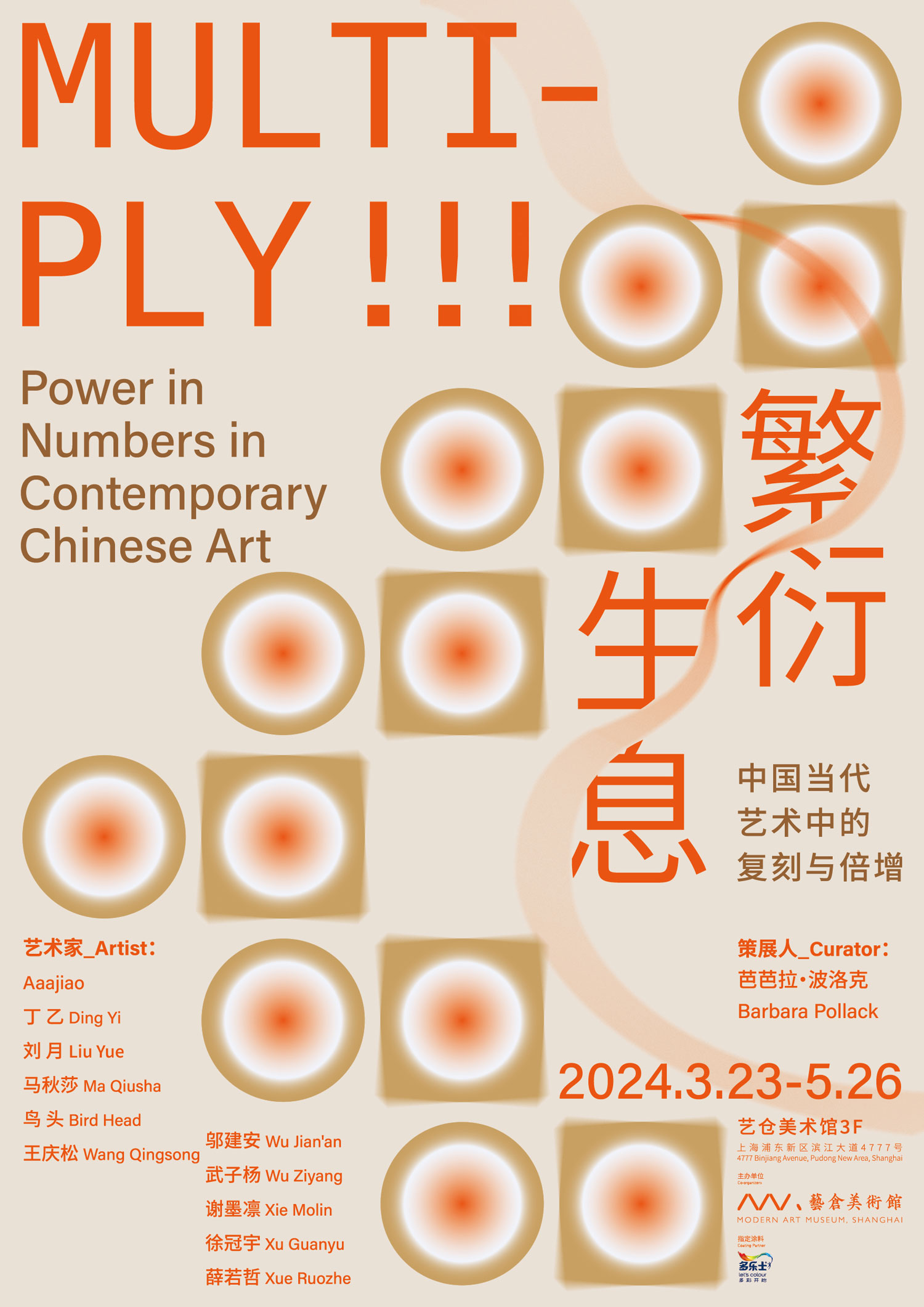展期 Period:
2024.3.23—2024.5.26
艺术家 Artist:
徐文恺 aaajiao、丁乙 Ding Yi、刘月 Liu Yue、马秋莎 Ma Qiusha、鸟头 Birdhead、王庆松 Wang Qingsong、邬建安 Wu Jian'an、武子杨 Wu Ziyang、谢墨凛 Xie Molin、徐冠宇 Xu Guanyu、薛若哲 Xue Ruozhe
策展人 Curator:
地点 Venue:
艺仓美术馆 Modern Art Museum Shanghai
⇨展品清单 Works List
展览介绍 Introduction:
1938年,德国哲学家瓦尔特·本雅明写下著名的《机械复制时代的艺术作品》,然而在此之前,中国艺术家们便已熟谙蕴藏在复刻与倍增中的力量,深入研究运用并将其发扬光大。公元700年,中国就发明了版印技术;在更久远的青铜器制造工艺中,“模具”也被制作者分享使用。从西安浩浩荡荡的兵马俑到蔡国强绽放在紫禁城上空的AR 焰火,「倍增」在中国艺术创作中一直占据着核心地位。艺术家们借助复制性工具创作、翻制、传播自己的作品,「倍增」不仅在实践中广泛应用,也成为了中国当代艺术领域的核心主题。诸多中国艺术家将复制与倍增作为方法,打造出令人惊叹的奇观。
本次展览呈现的艺术家不仅将复刻倍增作为快速翻制作品并加以传播的工具,更将其视为创作主旨。有些艺术家探索着倍增中蕴含的幽默与讽刺力量,另一些则将复刻视为赋权工具,并深入研究。游走在翻模、版印以及剪纸等传统创作和人工智能、虚拟现实等最新技术之间,这些创作挖掘出内在的自恋与自我膨胀情结,映照出社交媒体时代下被大众传媒稀释的自我。彼此交错呼应间,共同挑战当下复杂矛盾的视觉边界。
《繁衍生息》试图回应一种基于复刻、倍增之上的视觉景观与图像生成逻辑。正如同开幕式上整齐划一的鼓手或社交媒体上泛滥的网红形象,中国以此类繁复的奇观而闻名。然而,艺术家对于复刻手法的运用仍缺少足够的研究和讨论。本次展览拒绝给复刻、倍增打上抄袭、廉价、无意义行为的标签;相反,我们赞扬群体的巧思,以此彰显艺术如何通过不同再现手段,向我们传递动人而发人深省的力量。
Long before the great German philosopher Walter Benjamin wrote his famous 1938 essay, The Work of Art in the Age of Mechanical Reproduction, Chinese artists knew the power of copying and multiplying as tools for studying and glorifying original artworks. From the grand display of the Terracotta Warriors in Xi’an to Cai Guo Qiang’s AR fireworks above the Forbidden City, the experience of the “multiplier” is the core of Chinese artmaking. Printmaking was invented in China in 700 A.D. and molds were used for even the earliest of bronze sculptures. Today, Chinese artists rely on the tools of reproduction to create, duplicate and distribute their creations. Yet, beyond practical uses of multiplication, “multiplicity” has become a central theme in Chinese contemporary art with many young Chinese artists replicating a mass of identical objects and images to create astounding spectacles.
In this exhibition, we will examine a group of artists for whom multiplication and repetition are the very points of their artworks, rather than merely a tool for easy replication and widespread distribution. Chinese artists today recognize the irony and humor that multiplication offers; others openly investigate replication as a tool of empowerment. Dwelling between classical techniques, such as molds, printmaking and paper cutting, and latest technology, including artificial intelligence and virtual reality, the works explore the inherent narcissism and self-aggrandizement, underscore the dilution of self in the age of social media. All together, they challenge the boundary of today’s visual landscape of complicity and paradox.
The use of multiplication to create spectacle is the core of this exhibition. Like synchronized drummers at opening ceremonies or omnipresence of images of social mediaidols, China excels at this form of spectacle yet its artists’ use of multiplication has rarely been investigated in a museum exhibition. Here, instead of attaching shame or illegality to multiples, the exhibition celebrates the power of the crowd and highlights those artists who make use of reproduction to beautiful and thought-provoking ends.

